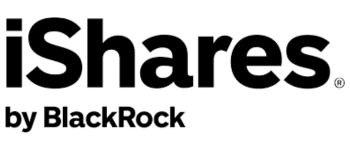A Trusted Brand With Global Reach: Here Are Some of Canada’s Blackrock ETFs
Key takeaways
Strategic Core Holdings – Each ETF can serve as a core building block in a well-diversified portfolio, whether for equity growth, international exposure, or bond stability.
Broad Market Exposure – BlackRock’s Canadian ETFs provide access to domestic, U.S., international, and fixed-income markets, offering diversified investment opportunities.
Low-Cost Investing – These ETFs are designed with low expense ratios, making them efficient for long-term investors looking to minimize fees.
One ETF I like way better than the ones on this list.BlackRock, the world’s largest asset manager, offers a variety of exchange-traded funds (ETFs) tailored for Canadian investors.
These funds provide a way to gain exposure to various asset classes, including equities and fixed income, across domestic and international markets.
Canadian investors are often drawn to BlackRock ETFs for their relatively low management fees and brand recognition. The company is, after all, one of the largest asset managers in the world.
As the ETF landscape in Canada continues to evolve, BlackRock remains a key player. I’ve seen quite a few fresh funds from Blackrock hit the market over the last few months, catering to a wide variety of investors.
I’d imagine that’s why you’re here as well: to identify some of the best Blackrock ETFs for your portfolio. That’s exactly why we’re going to explore them in this article.
Let’s get started
Canada’s largest and most liquid ETF
iShares S&P/TSX 60 ETF (TSE:XIU)

XIU tracks the S&P/TSX 60 Index, which represents 60 of Canada’s largest companies. It provides exposure to major sectors like financials, energy, and materials, making it a popular choice for investors seeking broad Canadian market exposure.
International developed market exposure
iShares Core MSCI EAFE IMI ETF (TSE:XEF)

XEF provides broad exposure to developed markets outside North America, including Europe, Asia, and Australia. It tracks the MSCI EAFE IMI Index and includes large-, mid-, and small-cap companies.
Broad exposure to Canadian bonds
iShares Core Canadian Universe Bond ETF (TSE:XBB)

XBB tracks the FTSE Canada Universe Bond Index, offering diversified exposure to government and corporate bonds across various maturities.
U.S. market exposure with low cost
iShares Core S&P 500 ETF (TSE:XUS)

XUS provides access to the S&P 500, offering exposure to 500 of the largest U.S. companies across all major sectors.
One-ticket global equity solution
iShares Core Equity ETF Portfolio (TSE:XEQT)

XEQT is a 100% equity ETF that provides diversified exposure to Canadian, U.S., and international markets in one fund.
Direct Bitcoin exposure through a regulated ETF
iShares Bitcoin Trust ETF (IBIT:NO)

IBIT seeks to reflect the performance of the price of Bitcoin, less expenses. As a physically-backed ETF, it holds actual Bitcoin, offering investors a straightforward method to gain exposure to the cryptocurrency market without the complexities of direct ownership.
Key factors when selecting an ETF
Management Expense Ratio (MER)
The Management Expense Ratio (MER) represents the combined total of all management fees and operating expenses associated with an ETF, expressed as a percentage of the ETF’s average net assets.
You should heavily scrutinize the MER as it directly impacts your net returns. Keep in mind that you need to look to the fact sheet of an ETF, not a standard data website like Yahoo Finance, for total fees. There can be additional fees on top of what is listed publicly.
Portfolio diversification
Diversification benefits are key in mitigating risk. An ETF with a comprehensive sector allocation can protect investors from volatility in any single sector. For instance, BlackRock offers ETFs that diversify not just across industries but global markets as well, safeguarding against regional downturns.
Tax efficiency
ETFs can offer better tax efficiency through lower turnover of holdings, which can result in fewer capital gains distributions. There are also funds that pay particularly high distributions that can expose investors to higher taxable income if held in taxable accounts.
It’s important to consider the overall amount and the structure of an ETF distribution to make sure it’s right for you.
